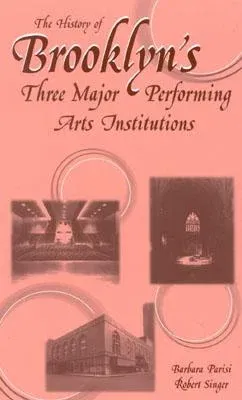Barbara Parisi
(Author)The History of Brooklyn's Three Major Performing Arts InstitutionsHardcover, 17 December 2002

Qty
1
Turbo
Ships in 2 - 3 days
In Stock
Free Delivery
Cash on Delivery
15 Days
Free Returns
Secure Checkout

Print Length
192 pages
Language
English
Publisher
Scarecrow Press
Date Published
17 Dec 2002
ISBN-10
081083765X
ISBN-13
9780810837652
Description
Product Details
Authors:
Book Format:
Hardcover
Country of Origin:
US
Date Published:
17 December 2002
Dimensions:
22.2 x
13.87 x
1.73 cm
ISBN-10:
081083765X
ISBN-13:
9780810837652
Language:
English
Location:
Lanham, MD
Pages:
192
Publisher:
Weight:
362.87 gm